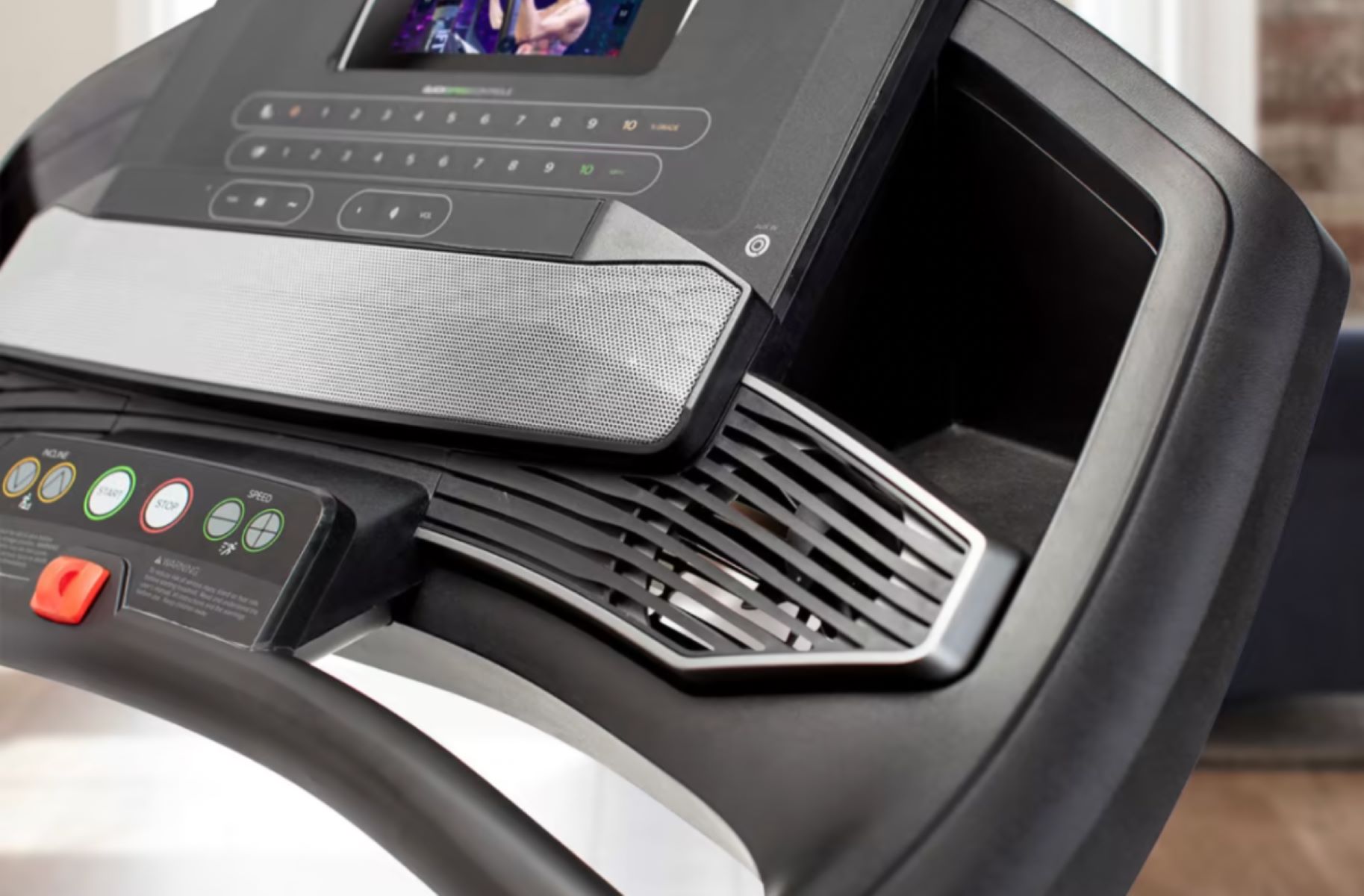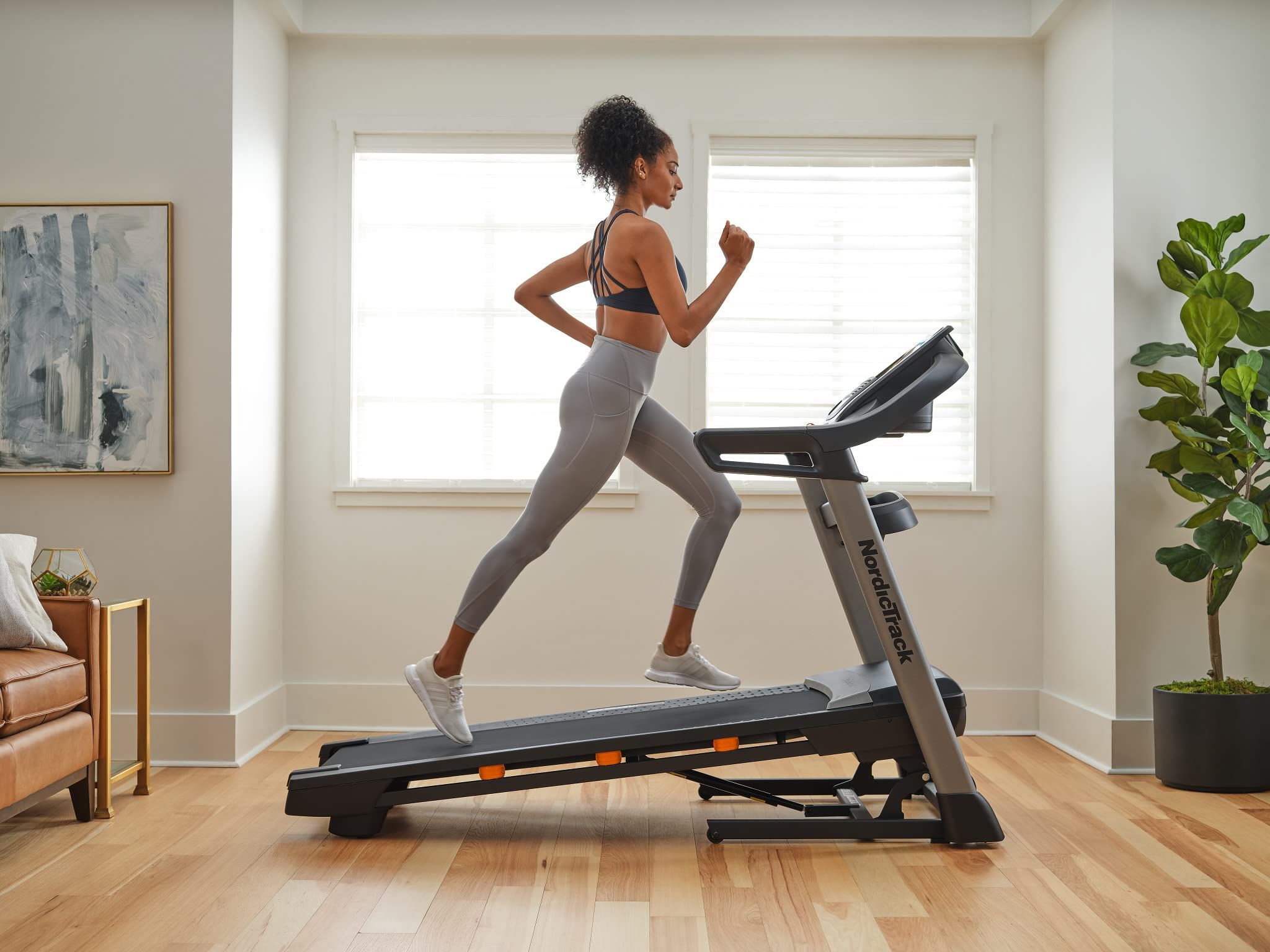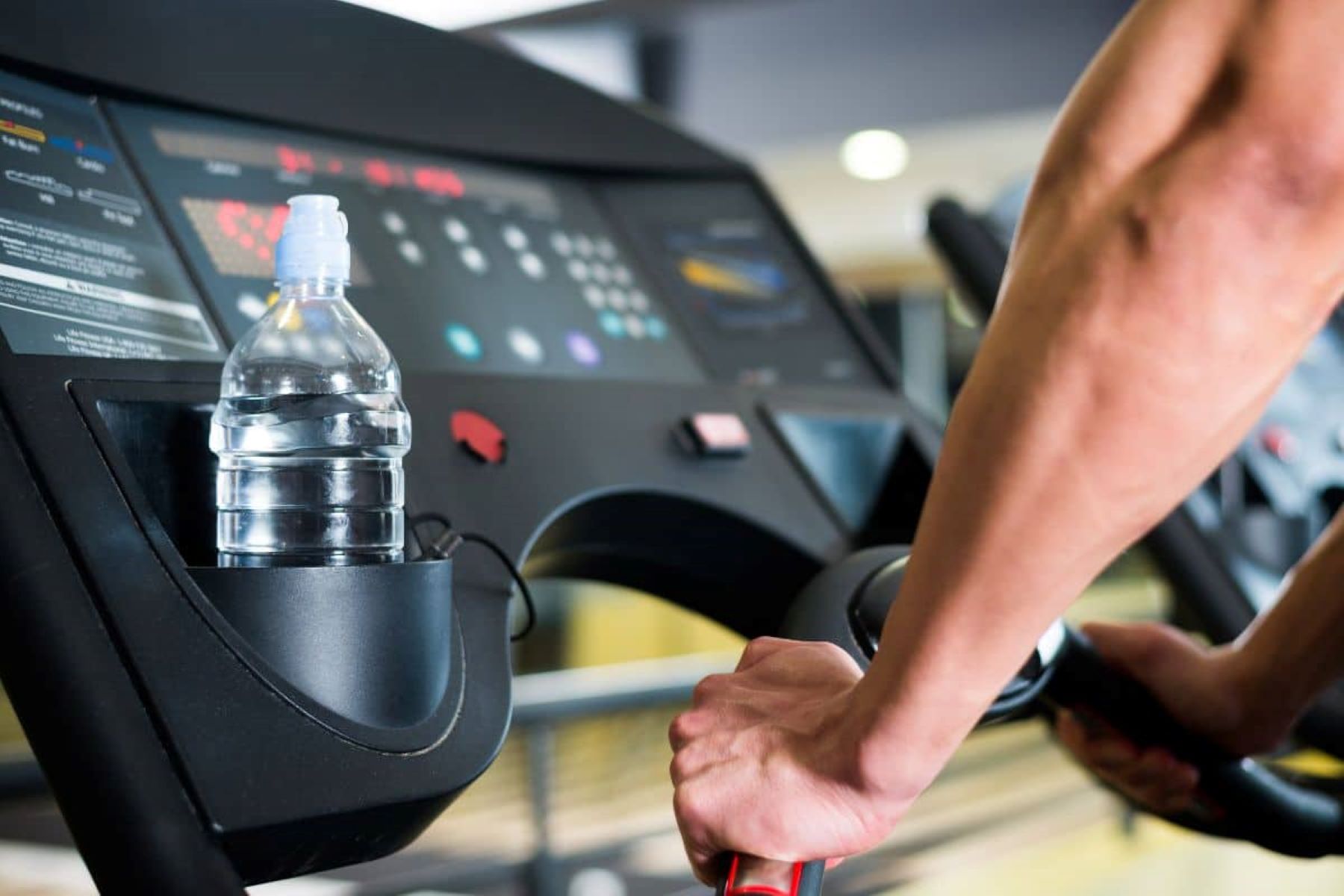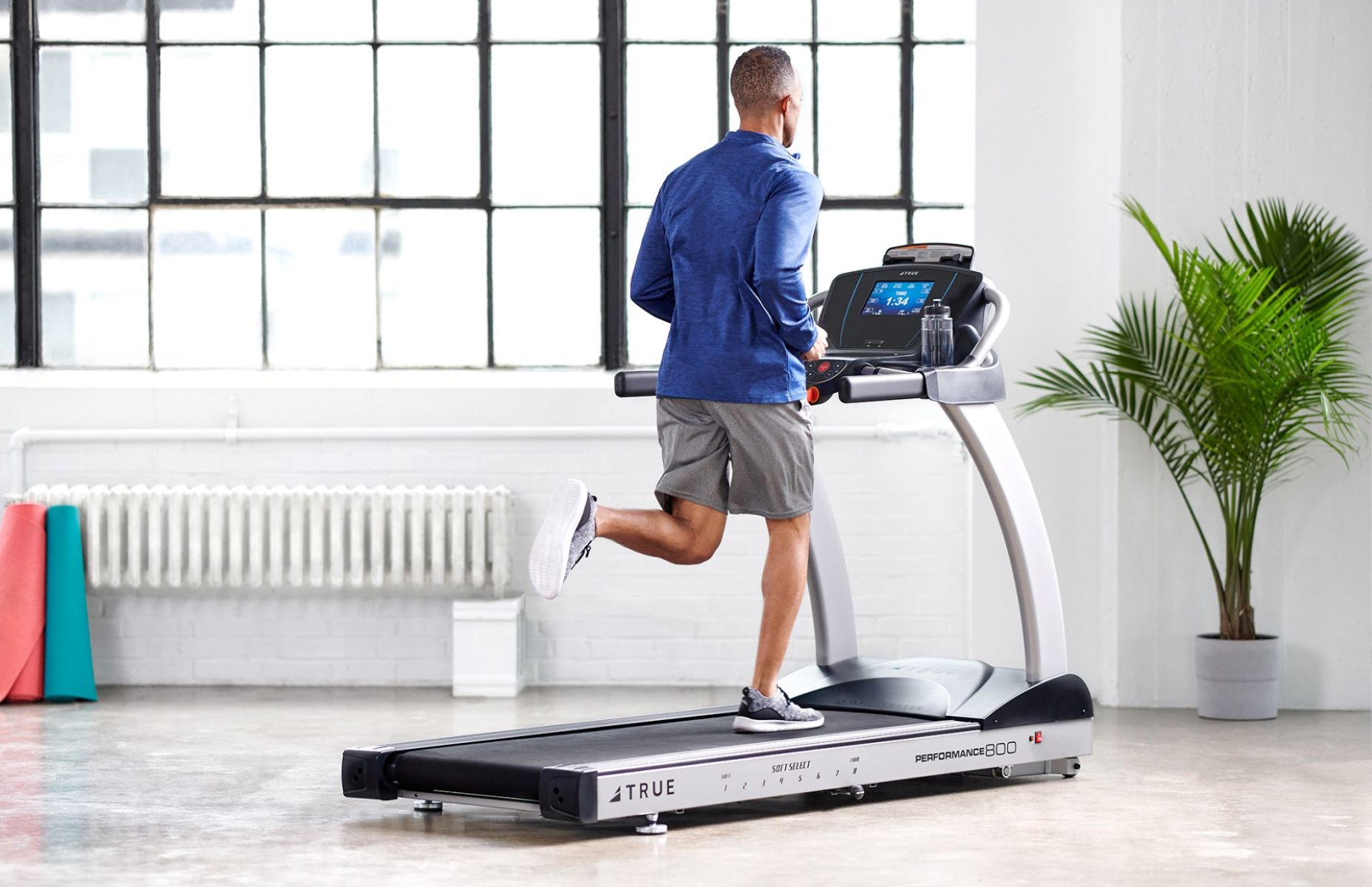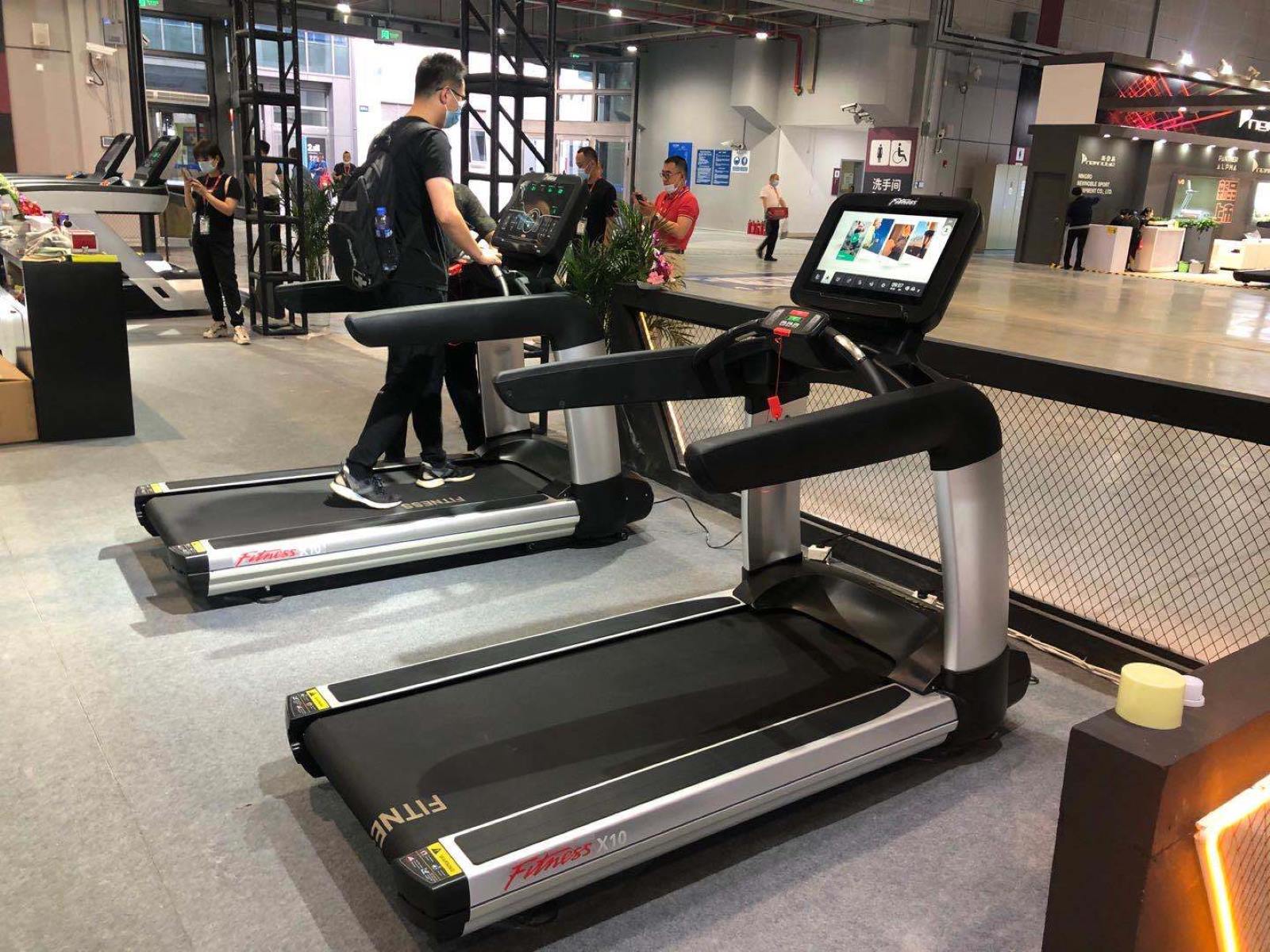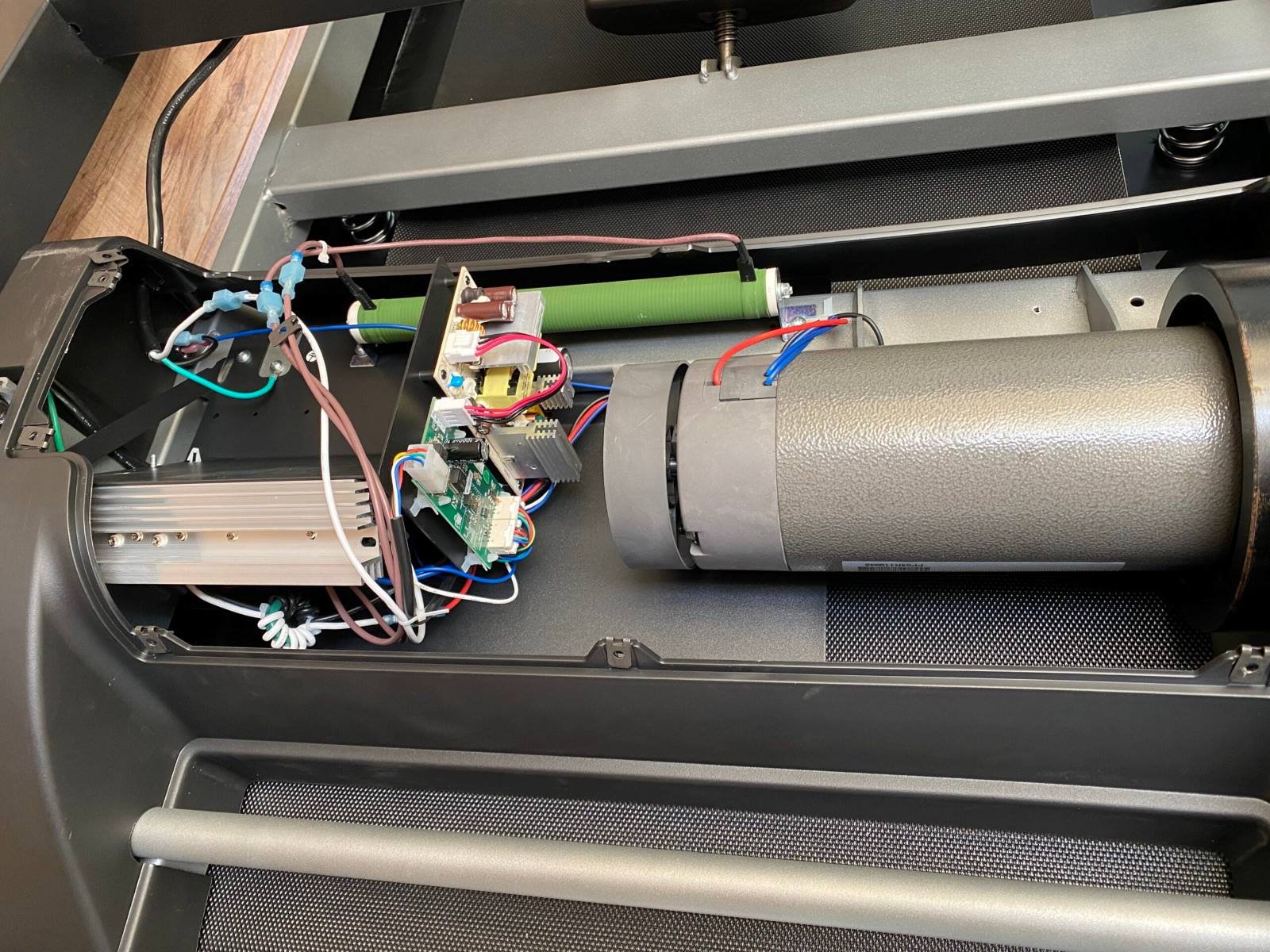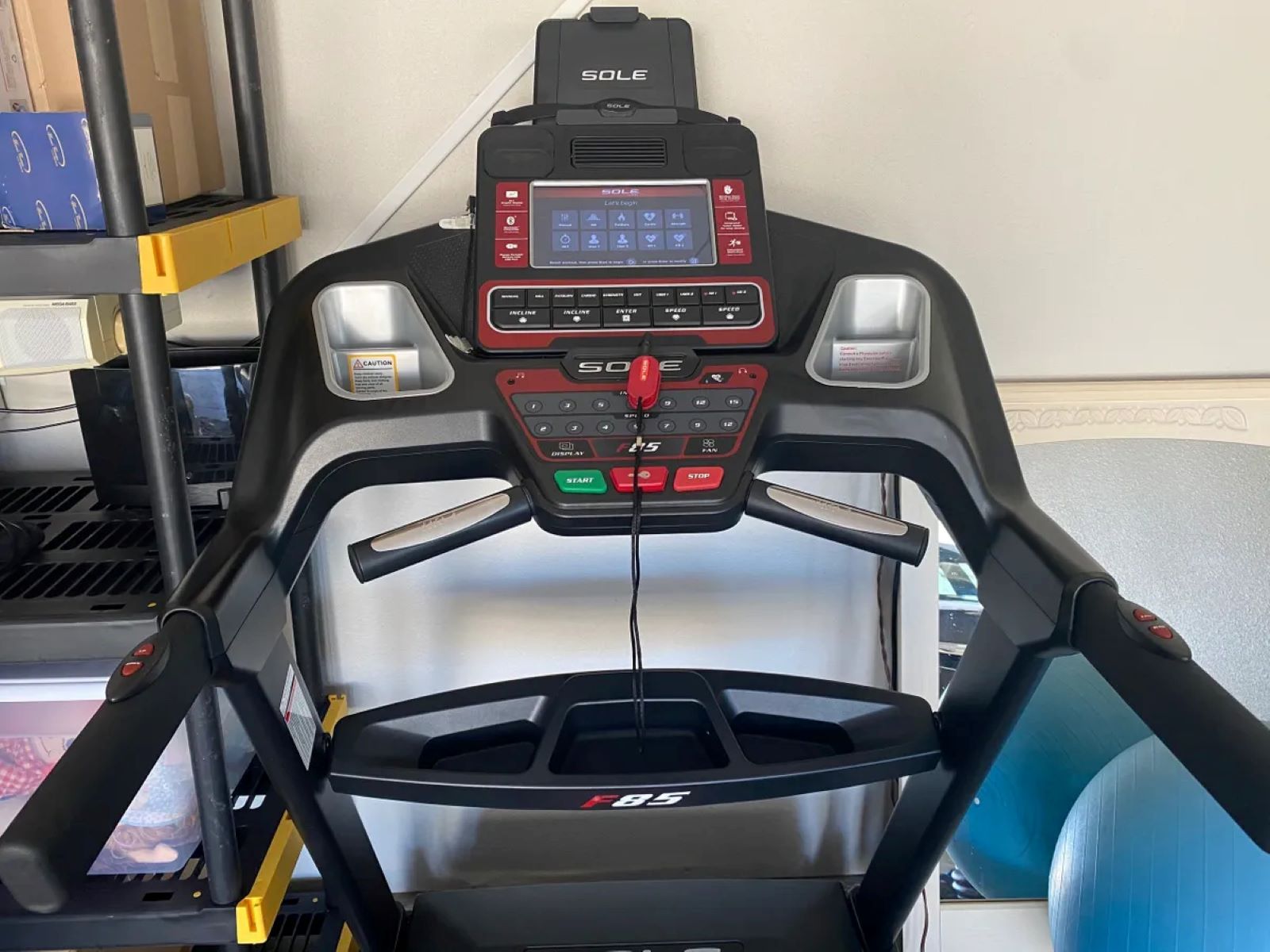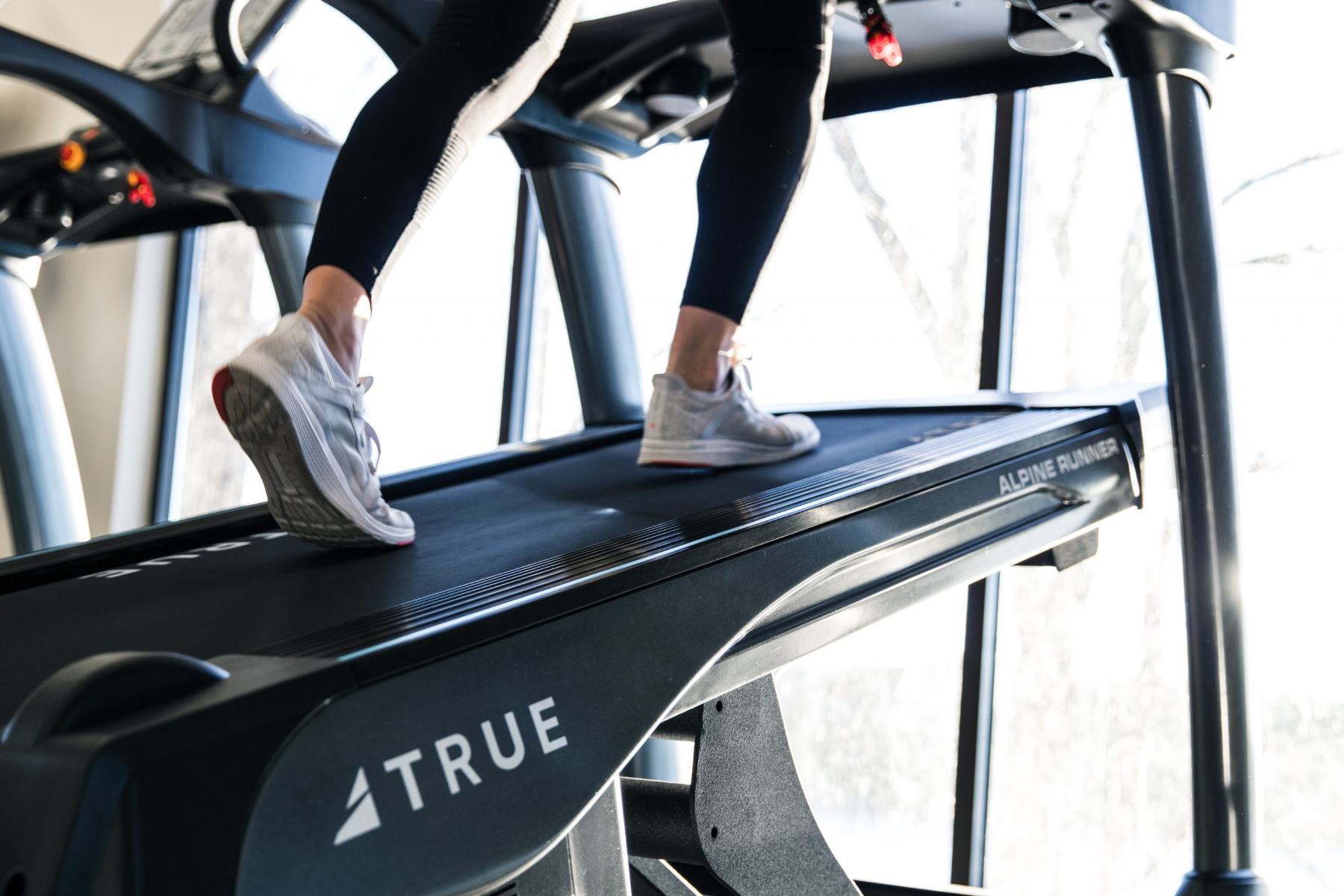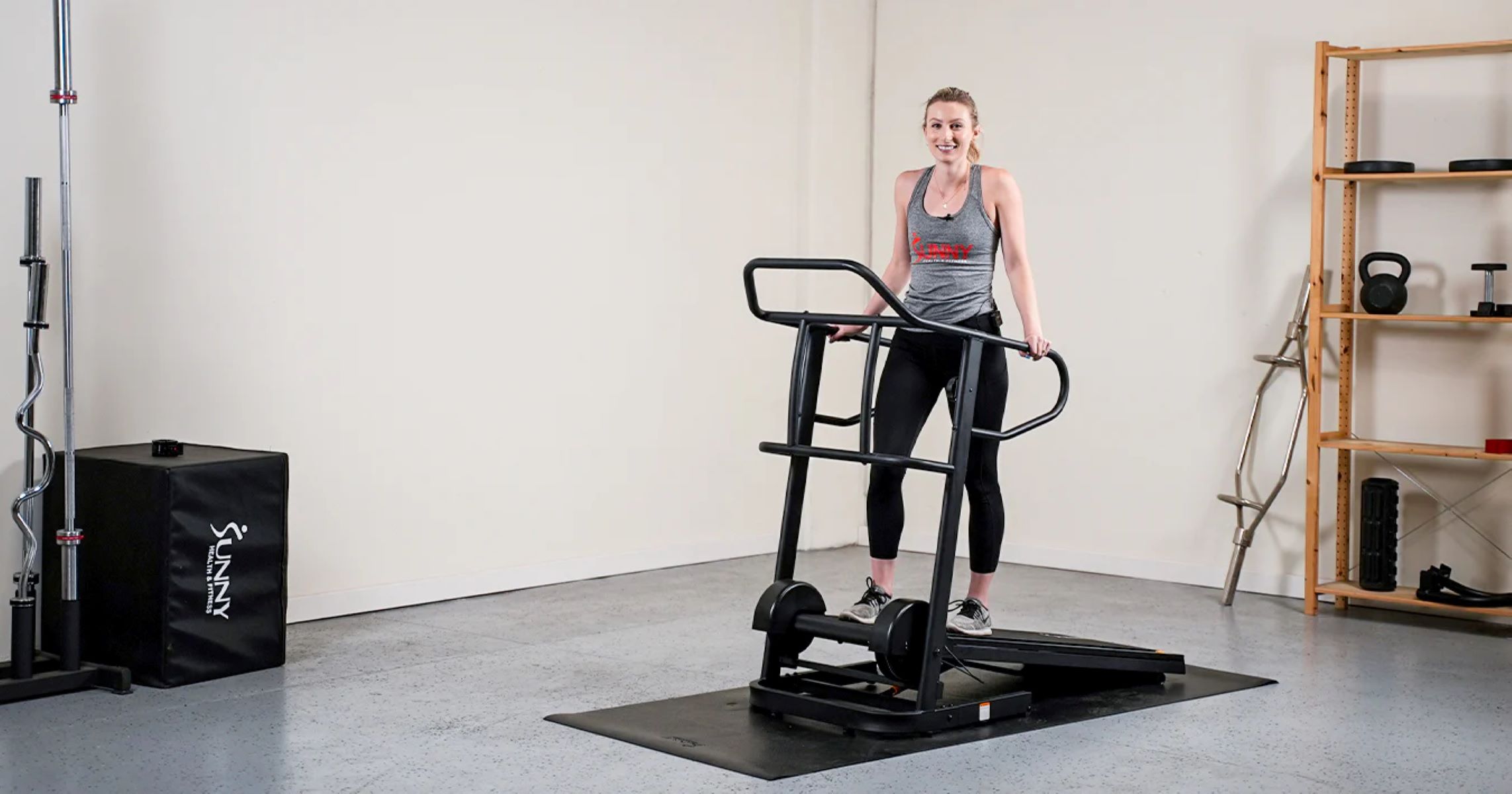

Featured
What Is Manual Incline On A Treadmill
Modified: January 2, 2024
Discover the benefits of manual incline on a treadmill with our featured article. Find out how this feature can enhance your workout and help you achieve your fitness goals.
Introduction
Welcome to the world of treadmill workouts! Treadmills are a popular choice for indoor cardio exercises, but did you know that some treadmills come equipped with a manual incline feature? In this article, we will explore what manual incline on a treadmill is and how it can enhance your workout experience.
When it comes to running or walking on a treadmill, sometimes a flat surface just doesn’t cut it. That’s where the manual incline feature comes into play. By adjusting the incline, you can simulate the feeling of running or walking uphill, which can increase the intensity of your workout and target different muscle groups.
But what exactly is a manual incline on a treadmill? Simply put, it’s a feature that allows you to manually adjust the angle of the running deck. Unlike motorized incline treadmills that adjust the incline automatically at the touch of a button, manual incline treadmills require you to manually adjust the incline level by using a lever or dial.
The manual incline feature is a great option for those who want to add variety and challenge to their treadmill workouts without the higher cost associated with motorized incline treadmills. It allows you to customize your workout and target specific muscle groups by choosing different incline levels.
Now that we have a basic understanding of what manual incline on a treadmill is, let’s delve deeper into how it works and the benefits it offers. Whether you’re a beginner or an experienced fitness enthusiast, incorporating manual incline into your treadmill workouts can take your fitness journey to new heights.
Definition of Manual Incline
Manual incline on a treadmill refers to the ability to manually adjust the angle of the treadmill’s running deck to create an incline or decline. Unlike motorized incline treadmills that have preset incline options, manual incline treadmills require you to manually adjust the incline level by using a lever, dial, or other mechanisms.
The incline range of manual incline treadmills can vary from model to model, but typically they offer incline levels ranging from 1% to 15%. Some advanced manual incline treadmills may even go up to 20% or more. The higher the incline percentage, the steeper the incline and the more challenging the workout.
The manual incline feature allows you to simulate the terrain of outdoor running or walking, making your indoor workouts more engaging and effective. It provides a versatile and customizable workout experience, enabling you to target different muscle groups and achieve specific fitness goals.
With manual incline, you have the freedom to choose the incline level that suits your workout intensity and training objectives. Whether you want to challenge yourself with a steep uphill climb or engage in a gentle incline walk, manual incline treadmills give you the flexibility to adjust the incline as you desire.
It’s important to note that manual incline treadmills may not provide as precise and accurate incline adjustments as their motorized counterparts. The mechanisms used for manual incline adjustment can have some tolerance, resulting in slight variations in the actual incline angle. However, this does not significantly impact the overall effectiveness of manual incline workouts.
Now that we have a clear understanding of what manual incline on a treadmill entails, let’s explore how it works and the benefits it offers for your fitness journey.
How Does Manual Incline Work?
Understanding how manual incline on a treadmill works is essential to make the most of this feature during your workouts. Unlike motorized incline treadmills that rely on a built-in motor to adjust the incline, manual incline treadmills require your physical effort to change the incline level.
Typically, manual incline treadmills have a lever or dial located near the front or side of the machine. By engaging with the lever or rotating the dial, you can manually adjust the incline level of the running deck. This mechanism connects to the incline mechanism under the treadmill, which raises or lowers the deck, creating the desired incline or decline.
When you want to increase the incline, you need to push or pull the lever upwards or rotate the dial in the clockwise direction, depending on the design of the treadmill. Similarly, if you want to decrease the incline or return to a flat surface, you can push the lever downwards or rotate the dial in the counterclockwise direction.
It’s important to note that manual incline adjustments may require some physical exertion, especially when changing to higher incline levels. You may need to use your leg strength or body weight to engage with the lever or dial and adjust the incline. This adds an element of resistance and intensity to your workout, making it more challenging and engaging.
One key advantage of manual incline treadmills is that the incline changes are instant and responsive to your adjustments. Unlike some motorized treadmills that have a slight delay when adjusting the incline, manual incline treadmills provide immediate changes, allowing you to seamlessly transition between different incline levels during your workout.
By using the manual incline feature on a treadmill, you can mimic the feeling of running or walking uphill, engaging different muscles and increasing the intensity of your workout. It provides a dynamic and enjoyable experience, allowing you to tailor your workout to your fitness level and goals.
Now that we have covered how manual incline on a treadmill works, let’s move on to explore the benefits it offers for your fitness journey.
Benefits of Manual Incline
Using the manual incline feature on a treadmill offers a wide range of benefits that can enhance your workout experience and help you achieve your fitness goals. Let’s look at some of the key advantages:
- Increased Calorie Burn: One of the primary benefits of manual incline is the ability to burn more calories. By walking or running on an incline, you engage more muscles in your lower body, including your calves, hamstrings, and glutes. This increased muscle activation leads to a higher calorie burn compared to exercising on a flat surface.
- Improved Cardiovascular Fitness: Manual incline workouts challenge your cardiovascular system by increasing the intensity of the exercise. As you walk or run uphill, your heart rate elevates, and your body works harder to deliver oxygen and nutrients to your muscles. This helps improve your cardiovascular endurance and overall fitness level.
- Toned Leg Muscles: The incline feature specifically targets your leg muscles. By walking or running uphill, you engage your quads, hamstrings, and calves more intensely. Over time, this can lead to stronger, more toned leg muscles and improved lower body strength.
- Variety in Workouts: Treadmill workouts can sometimes become monotonous if you’re always exercising on a flat surface. Manual incline adds variety and challenges to your workouts. You can mix up your routine by incorporating different incline levels, simulating different outdoor terrains, and keeping your workouts fresh and exciting.
- Targeted Muscle Engagement: By adjusting the incline, you can specifically target different muscle groups. Walking or running uphill engages your glutes and hamstrings more, while walking or running downhill puts more emphasis on your quads. This allows you to focus on specific muscle groups and create a well-rounded, balanced workout.
Incorporating manual incline into your treadmill workouts can provide these benefits and more. It’s a versatile feature that allows you to customize your workouts based on your fitness level and goals. Whether you’re aiming to lose weight, improve cardiovascular fitness, or tone your muscles, manual incline can be a valuable tool to help you on your fitness journey.
Drawbacks of Manual Incline
While the manual incline feature on a treadmill offers numerous benefits, it’s important to be aware of some potential drawbacks as well. Let’s explore some of the limitations and considerations associated with using manual incline:
- Limited Incline Range: Manual incline treadmills typically have a limited range of incline levels compared to motorized incline treadmills. The incline options may range from 1% to 15% or slightly higher. If you’re looking for a more significant incline range, you may need to consider a motorized incline treadmill instead.
- Manual Adjustments Required: The manual incline feature requires you to physically adjust the incline level during your workout. This can be inconvenient if you prefer a hands-free workout experience or if you want to easily change the incline level multiple times during a session. Motorized incline treadmills offer the convenience of automatic incline adjustments at the touch of a button.
- Potential Strain on Joints: Walking or running on a steep incline can put additional strain on your joints, particularly your knees and ankles. If you have a history of joint issues or are new to exercise, it’s essential to start with a gentle incline and gradually increase the intensity to avoid potential joint discomfort or injuries.
- Less Precise Incline Adjustments: Manual incline treadmills may not provide as precise incline adjustments as their motorized counterparts. The mechanisms used for manual incline can have some tolerance, resulting in slight variations in the actual incline angle. However, for most users, the slight variations in incline level do not significantly impact the overall effectiveness of their workouts.
- Space and Portability: Manual incline treadmills can be bulkier and heavier compared to non-incline treadmills. If space is a concern in your home or if you often need to move the treadmill around, it’s important to consider the size and weight of the machine. Ensure that you have enough space to accommodate the treadmill and that it’s easy to move if necessary.
Despite these drawbacks, manual incline treadmills remain a popular option for individuals seeking an affordable way to incorporate incline training into their workouts. By considering these limitations and taking necessary precautions, you can still enjoy the benefits of manual incline while ensuring a safe and effective workout.
Choosing the Right Manual Incline Setting
Choosing the right manual incline setting on a treadmill is crucial to optimize your workout and meet your fitness goals. Here are some factors to consider when selecting the appropriate incline level:
- Fitness Level: Your current fitness level plays a significant role in determining the appropriate incline setting. If you’re a beginner or new to exercise, start with a lower incline level around 1% to 3% to allow your body to adapt gradually. As your endurance and strength improve, you can gradually increase the incline to challenge yourself.
- Workout Intensity: Your desired workout intensity is another important consideration. Higher incline levels increase the intensity of your workout, requiring more effort and engaging more muscles. If your goal is to burn calories, improve cardiovascular fitness, or target specific muscle groups, opting for a steeper incline level will provide a more challenging workout.
- Training Goals: Consider your specific training goals when selecting the manual incline setting. If you’re training for uphill races or outdoor activities that involve steep terrains, incorporating higher incline settings can help simulate those conditions and better prepare your body.
- Terrain Variation: Varying the incline level during your workout can add variety and make your treadmill sessions more engaging. Consider incorporating intervals where you alternate between different incline levels. For example, you can do a few minutes at a moderate incline followed by a period at a higher incline to challenge yourself and keep your workout interesting.
- Personal Preference: Lastly, listen to your body and pay attention to your personal comfort and preference. Some individuals may find a specific incline level more enjoyable and sustainable for their workouts. Experiment with different incline settings to find the one that feels right for you and keeps you motivated to continue exercising.
Remember, it’s essential to start with proper warm-up and gradually increase the incline level to avoid straining your muscles or joints. Always listen to your body and adjust the incline setting accordingly to ensure a safe and effective workout experience.
Tips for Using Manual Incline Safely
Using manual incline on a treadmill can bring numerous benefits to your workout routine. To ensure a safe and effective exercise session, it’s important to follow these tips for using manual incline safely:
- Warm-Up: Prior to using the manual incline feature, it’s essential to warm up your muscles and prepare your body for exercise. Spend a few minutes walking or jogging on a flat surface to gradually increase your heart rate and warm up your muscles.
- Gradual Incline Increase: When adjusting the incline level on a manual incline treadmill, make sure to do so gradually. Avoid making sudden, drastic incline changes, especially if you’re new to incline training. Gradually increase the incline to allow your body to adapt and avoid any potential muscle strains or injuries.
- Maintain Good Posture: When walking or running on an incline, it’s crucial to maintain proper posture. Avoid slouching or leaning on the handrails for support. Keep your head up, shoulders relaxed, and engage your core muscles to maintain stability and reduce the strain on your back and neck.
- Use Handrails for Balance Only: While it’s tempting to hold onto the handrails for support, try to minimize reliance on them. Use the handrails only for balance when necessary and let your legs and core muscles do the work. This helps engage more muscles and maintain a natural gait stride.
- Wear Proper Footwear: Choosing the right footwear is crucial for any treadmill workout, especially when using manual incline. Opt for running shoes that provide ample cushioning, stability, and support to protect your feet, ankles, and joints while walking or running on a challenging incline.
- Stay Hydrated: It’s important to stay properly hydrated during your workouts, including when using manual incline. Keep a water bottle nearby and take regular sips of water to prevent dehydration. Listen to your body and drink as needed to maintain optimal hydration levels.
- Cool Down and Stretch: After completing your manual incline workout, remember to cool down with a few minutes of light exercise and stretch your muscles. This can help prevent muscle soreness and promote faster recovery.
By following these safety tips, you can enjoy the benefits of manual incline workouts while minimizing the risk of injury. Remember that everyone’s body is different, so listen to your body’s signals and adjust the incline level and intensity according to your fitness level and comfort.
Conclusion
Manual incline on a treadmill is a fantastic feature that allows you to add variety, challenge, and customization to your workouts. By adjusting the incline manually, you can simulate running or walking on different terrains, engage different muscle groups, and increase the intensity of your workouts.
We learned that manual incline treadmills require you to physically adjust the incline level using a lever or dial, offering a more affordable alternative to motorized incline treadmills. While manual incline treadmills have certain limitations, such as a limited incline range and the need for manual adjustments, they continue to be a popular option for individuals seeking an effective and versatile workout experience.
The benefits of manual incline are numerous, including increased calorie burn, improved cardiovascular fitness, toned muscles, workout variety, and targeted muscle engagement. It allows you to customize your workouts based on your fitness level, goals, and personal preference.
However, it is important to consider the drawbacks and use manual incline safely. Gradual incline increase, maintaining good posture, using handrails for balance only, wearing proper footwear, staying hydrated, and cooling down and stretching are essential tips to follow for a safe and effective manual incline workout.
Whether you’re a beginner or an experienced fitness enthusiast, incorporating manual incline into your treadmill workouts can take your fitness journey to new heights. It adds excitement, challenge, and variation to your exercise routine, helping you achieve your fitness goals and make significant progress.
So, next time you hop on a manual incline treadmill, embrace the opportunity to elevate your workout, engage your muscles, and experience the benefits of incline training. Get ready to embark on a challenging and rewarding fitness adventure!
